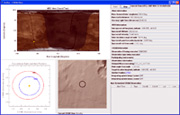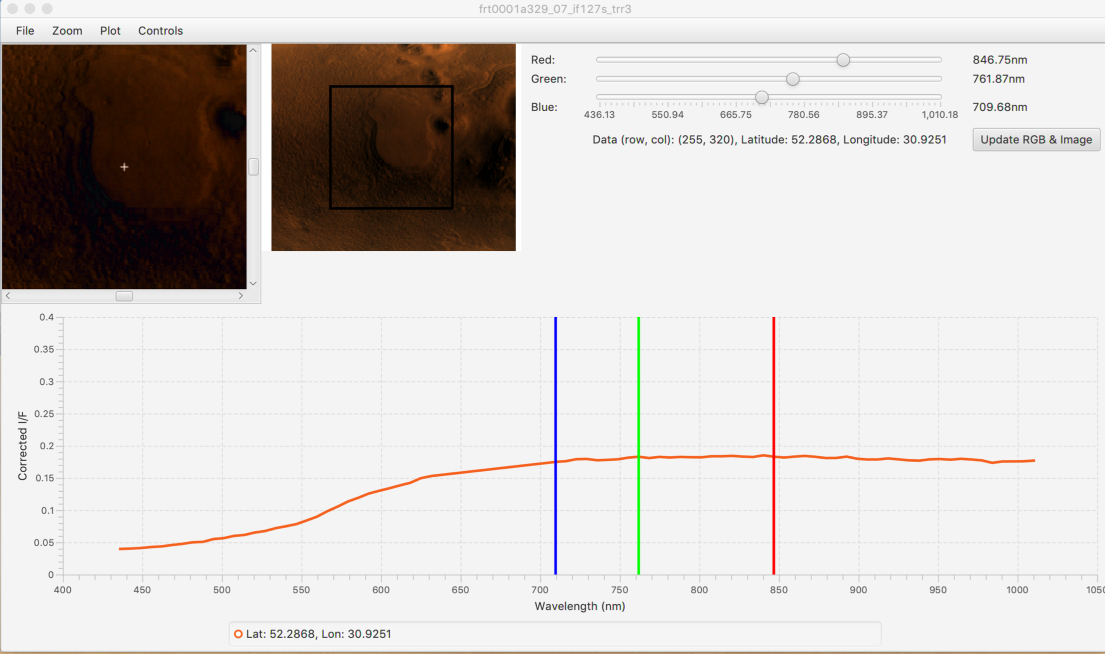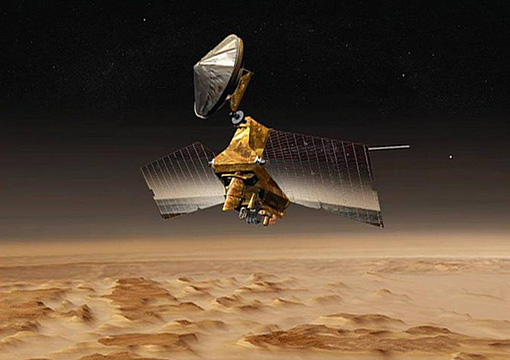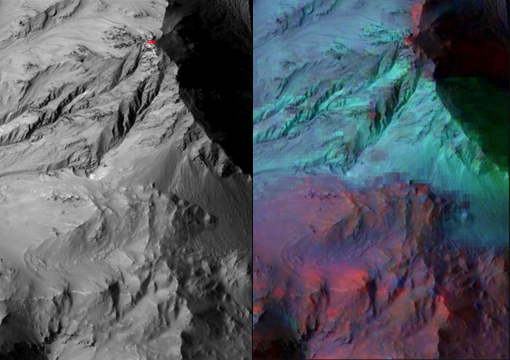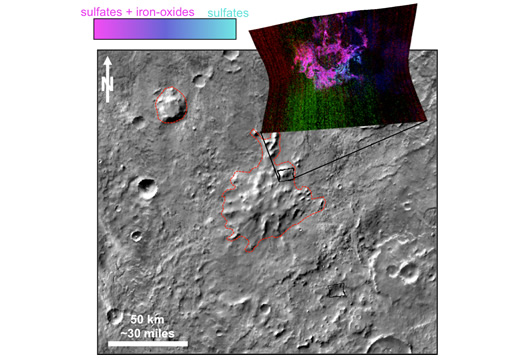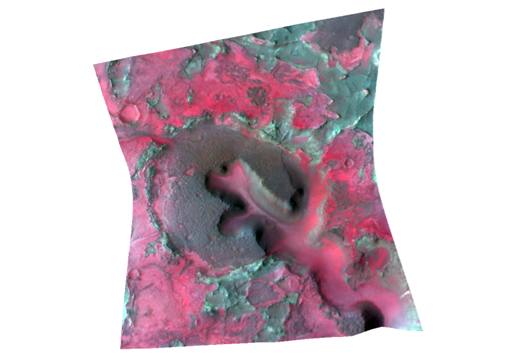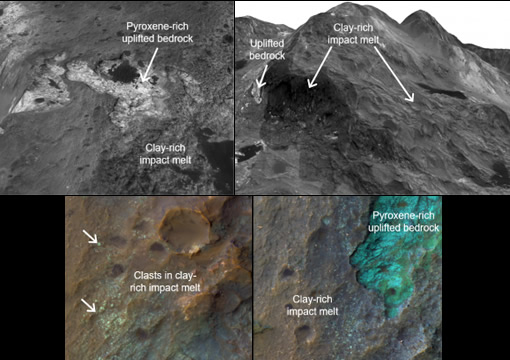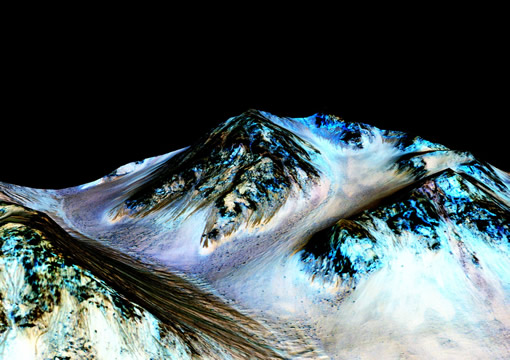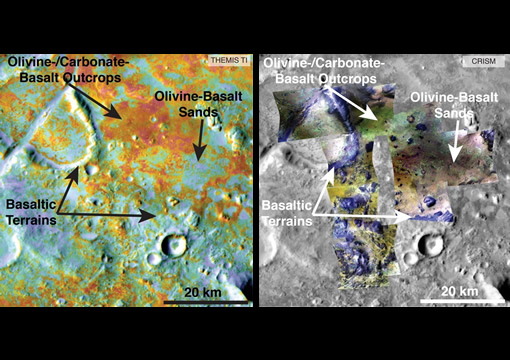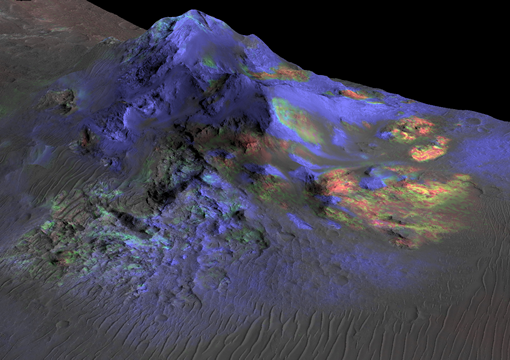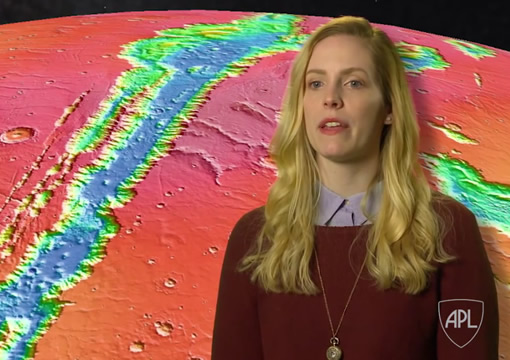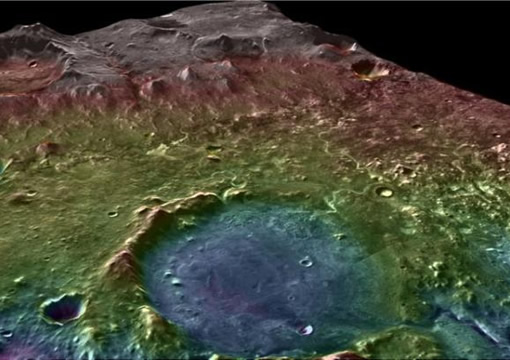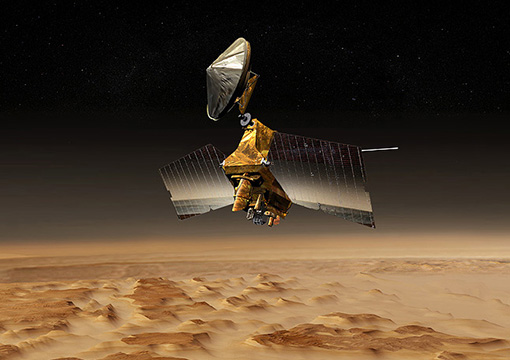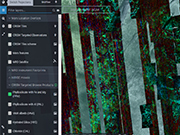 |
||||||||||||||
|
|
||||||||||||||
|
Mission Elapsed Time
CRISM Downloads CRISM View
JCAT
What is CRISM? The Compact Reconnaissance Imaging Spectrometer for Mars (CRISM) is 1 of 6 science experiments on the Mars Reconnaissance Orbiter, which takes measurements of both the surface and the atmosphere of Mars. CRISM data are used to find minerals’ spectral signatures on Mars. Different minerals form in different settings, ranging from ancient lakes and deltas to volcanic lava flows. We use the mineral evidence to understand how different geologic processes have shaped the planet over time. CRISM also observes the polar ice caps and atmosphere to understand seasonal and year-to-year variations in the Martian weather. |
Featured ImagesLatest NewsFebruary 9, 2018 January 11, 2018 July 29, 2016 June 15, 2016 May 3, 2016 March 17, 2016 Team Profiles
CRISM Spectral LibraryThe MRO CRISM Spectral Library is an analysis tool for interpreting CRISM data. it currently contains 2,260 spectral analyses of 1,134 Mars-analog samples, all measured under desiccating conditions so that materials that adsorb water look as they would on Mars. This was made avaialble to the community through the PDS on the day that MRO entered Mars orbit! |
The MICA Files » 
The MICA Files is a compilation of published descriptions and type locations of unique spectral features identified on Mars by using data from CRISM. Learn more » CRISM Quickmap
Revealing Questions What is a mineral?A mineral is a naturally occurring crystalline chemical compound that makes up part or all of a rock. CRISM Facts In June 2011, CRISM science and operations team members received two NASA Public Service Group Achievement Awards for an outstanding mission. At the same time, CRISM's PI received a NASA Distinguished Public Service Medal. |
||||||||||||
